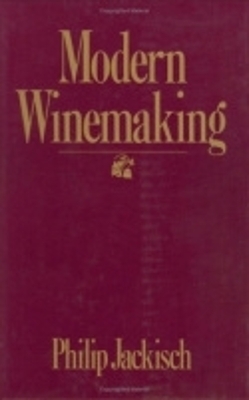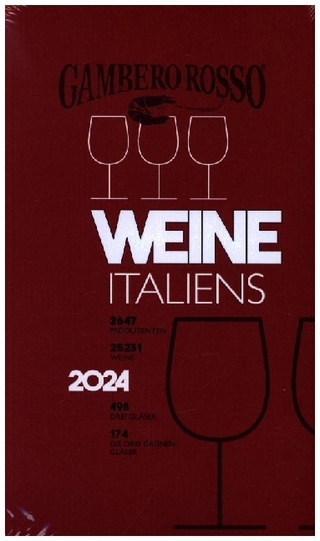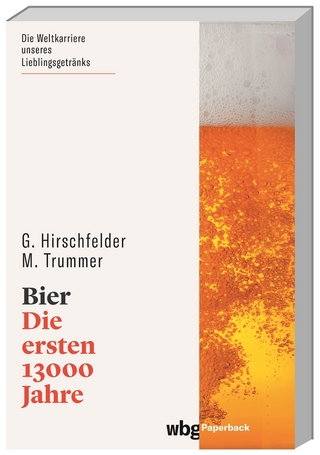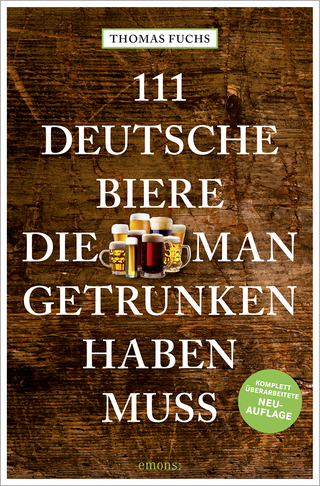
Modern Winemaking
Cornell University Press (Verlag)
978-0-8014-1455-8 (ISBN)
- Lieferbar (Termin unbekannt)
- Versandkostenfrei innerhalb Deutschlands
- Auch auf Rechnung
- Verfügbarkeit in der Filiale vor Ort prüfen
- Artikel merken
Here is a practical, comprehensive guide to winemaking, wines, and wine appreciation, written by an expert uniquely qualified by many years of experience in the field. Looking at winemaking as a craft as well as an art, Philip Jackisch augments a wealth of information and theory with many detailed examples. "It is now possible for anyone with access to grapes or other ingredients of decent quality to make consistently palatable or even excellent wines," he writes.
In clear language aimed at the amateur winemaker, Jackisch explains the science behind wine and its application to winemaking. At the same time, he includes important material for commercial winemakers. Jackisch covers each step in the process of winemaking, from growing or purchasing grapes; choosing equipment; fermenting, aging, and storing the wine; to keeping records. By exploring in detail the various factors that affect wine quality, he shows which elements in wine production can be controlled to achieve certain sensory results.
Among the other subjects he discusses arc specific types of wine, ways of evaluating wine, common problems in cellar operations and how to prevent or correct them, and wine competitions. Five appendixes supply additional technical information. Since 1985, Modem Winemaking has proven invaluable for winemakers, both commercial and amateur, for wine educators and students, and indeed, for anyone who wants to know more about wine.
Philip Jackisch, a research chemist and wine consultant, has been a partner in a small premium winery and has operated a semicommercial vineyard.
Preface1. An Overview of Winemaking
Winemaking Treatments
Craftsmanship and Artistry
The Importance of Consumer Preferences2. Grapes
Grape Varieties and Clones
Grape Genetics and Hybrids
Factors That Influence Grape Quality
Purchasing Wine Grapes
Growing Wine Grapes3. The Composition of Wines
Carbohydrates
Alcohols
Organic Acids
Phenolic Compounds
Nitrogen Compounds
Carbonyl Compounds
Inorganic Compounds
Odorous Compounds
Gases
Chemical Additives4. Winemaking Equipment and Materials
Winery Facilities
Necessary Equipment for the Home Winemaker
Other Useful Equipment for the Advanced Winemaker
Necessary Materials for the Home Winemaker
Other Useful Materials for the Advanced Winemaker5. Microorganisms and Fermentations
Molds
Still Table Wine Yeasts
Other Wine Yeasts
Malolactic Bacteria and Malic Fermenting Yeasts
Yeasts and Bacteria That Cause Spoilage6. Cellar Operations-Preventing and Correcting Problems
Preventing Clarity Problems
Preventing Color Problems
Preventing Loss of Fragrance
Preventing Off Odors and Flavors
Preventing Taste Problems
Preventing Other Flavor Problems
Preventing Microbial Infections
Quality Control Procedures
Restarting Stuck Fermentations
Reducing Hazes
Reducing Color and Off Odors
Reducing Oxidation and Volatile Acidity
Reducing Odorous Sulfur Compounds
Adjusting Bitterness and Astringency
Removing Trace Metals
Fighting Microbial Infections
Knowing When Corrections Are Hopeless 7. Adjusting Wine Acidity
Desirable Acidity in Wines
An Outline of Acidity Adjustment Methods
Methods of Increasing Acidity
Reducing Acidity by Amelioration
Reducing Acidity by Chilling
Reducing Acidity by Chemical Additions
Reducing Acidity with a Bacterial Fermentation
Ion Exchange
Adjusting Acidity by Blending8. Aging Wines
Controlling Oxidation
Inert Aging Containers
Aging in Wood
Wood Cooperage
Preparation and Maintenance of Barrels
Topping up Barrels
Wood Extractives
Oak Chips and Extracts9. Wine Blending
Blending Strategies
Planning the Blend
Blending Tactics
Blending for Color
Blending for Fragrance
Blending for Taste
Blending for Alcohol and Body
Blending for Wood Extract
Blending for Oxidation and Maturity
Other Blending10. White Table Wines
White Wines from Grape Concentrates
Standard-Quality White Wines from Grapes
General Quality Factors in White Wine Production
Premium White Wines-Fresh, Lighter Style
Premium White Wines-Aged, Heavier Style
White Wines from Native Grapes11. Red Table Wines
Red Wines from Grape Concentrates
Standard-Quality Red Wines from Grapes
Hot-Pressed Wines
General Quality Factors in Red Wine Production
Rose Wines
Nouveau Red Wines
Premium Red Wines-Aged, Heavier Style
Red Wines from Native Grapes12. Sweet Table Wines
Grapes for Sweet Table Wines
Production of Sweet Wines by Incomplete Fermentation
Botrytised Wines
Sweet Wines Produced by Sweetening Dry Wines
Preserving Sweet Table Wines13. Sparkling Wines
Traditional Champagne Method of Making Sparkling Wines
American Bottle-Fermented Sparkling Wines
Transfer-Process, Tank-Fermented, and Carbonated Sparkling Wines
Alternative Methods of Producing Homemade Bottle-Fermented Wines
Other Natural Sparkling Wines14. Fortified Wines
Characteristics of Sherries
Traditional Spanish Flor Method of Making Sherries
Non-Spanish Flor Sherries
Non-Flor Sherries
Characteristics of Ports
Portuguese Method of Making Ports
American Methods of Making Ports
Other Fortified Wines15. Flavored Wines
Vermouths
Other Aperitif Wines
Fruit-Flavored and "Special Natural Wines"16. Nongrape Wines
Fruit and Berry Wines
Mead
Other Nongrape Wines17. Sensory Evaluation of Wine
Equipment and Conditions Needed for Sensory Evaluation
Evaluating Color and Clarity
Other Aspects of Wine Appearance
Evaluating Fragrance
Off Odors
Evaluating Taste
Wood Character
Overall Wine Quality18. Wine Competitions
Typical Competition Rules
Judging Panels
Judging Procedures
Interpreting the Results of Judgings
Hints on Winning Competitions
Wine Label Competitions19. Wine Storage and Record Keeping
Storage Containers
Seals for Storage Containers
Labels and Capsules on Wine Bottles
Storage Racks
The Need for Wine Records
Vineyard Records
Winemaking Records
Wine-Tasting RecordsAppendix A: Measures, Conversion Factors, and Calculations
Appendix B: Laboratory Evaluation of Wines
Appendix C: Wine Vinegar
Appendix D: Sources of Supplies
Appendix E: Additional Sources of InformationSuggestions for Further Reading
Index
| Erscheint lt. Verlag | 25.7.1985 |
|---|---|
| Verlagsort | Ithaca |
| Sprache | englisch |
| Maße | 155 x 235 mm |
| Gewicht | 907 g |
| Themenwelt | Sachbuch/Ratgeber ► Essen / Trinken ► Getränke |
| Technik ► Lebensmitteltechnologie | |
| Weitere Fachgebiete ► Land- / Forstwirtschaft / Fischerei | |
| ISBN-10 | 0-8014-1455-5 / 0801414555 |
| ISBN-13 | 978-0-8014-1455-8 / 9780801414558 |
| Zustand | Neuware |
| Haben Sie eine Frage zum Produkt? |
aus dem Bereich


